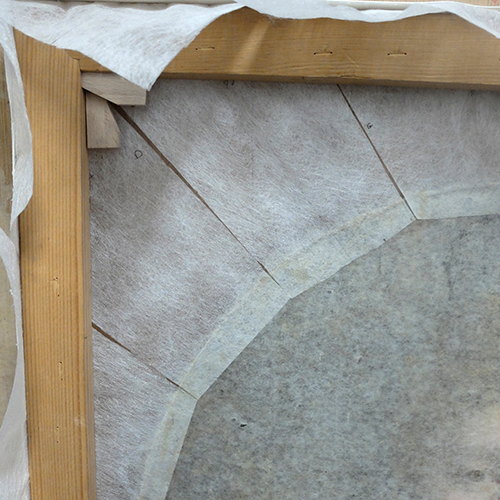The use of tension strips in art restoration
The use of tension strips in art restoration is crucial for preserving the integrity of the support structure. Among the many tools at the disposal of art restorers, tension strips have become an indispensable element in the treatment of fragile and damaged artworks. These strips, often made of canvas, Japanese paper, or other thin and resilient materials, are employed to consolidate and reinforce fragile or torn areas in artworks, whether they are on canvas, paper, or another substrate.
Tension strips are particularly prevalent in the restoration of canvas paintings, where artworks may exhibit cracks, tears, or areas of stretching caused by the passage of time, transportation, or past handling. The strips are meticulously applied to the backside of the canvas, and their adhesion is activated using a special adhesive. This process bolsters the overall structure of the canvas, preventing existing tears from worsening.
In addition to their utility in consolidating canvases, tension strips are also used for the restoration of drawings, engravings, and other works on paper. They can be employed to connect torn paper fragments or support fragile areas, thus preserving the artwork’s integrity and facilitating safe handling.
One of the notable qualities of tension strips is their reversibility. This means that they can be removed without causing damage to the artwork, if necessary in the future. This ensures that the restoration is carried out ethically, minimizing permanent interventions on the original work.
Ultimately, tension strips are a valuable tool in the arsenal of art restorers. Their application breathes new life into fragile artworks while preserving their authenticity and historical value. Thanks to these strips, art restorers continue to safeguard our artistic heritage, an essential endeavor to ensure that future generations can continue to appreciate these artistic treasures.

